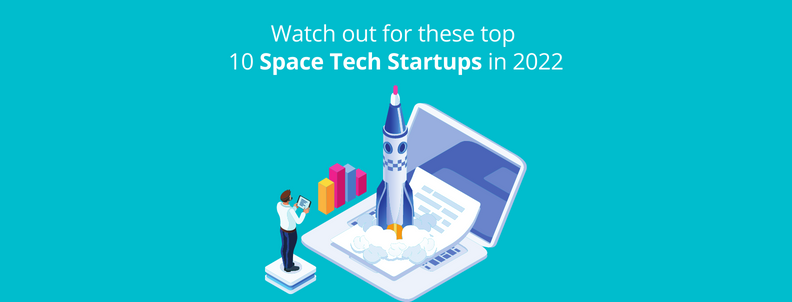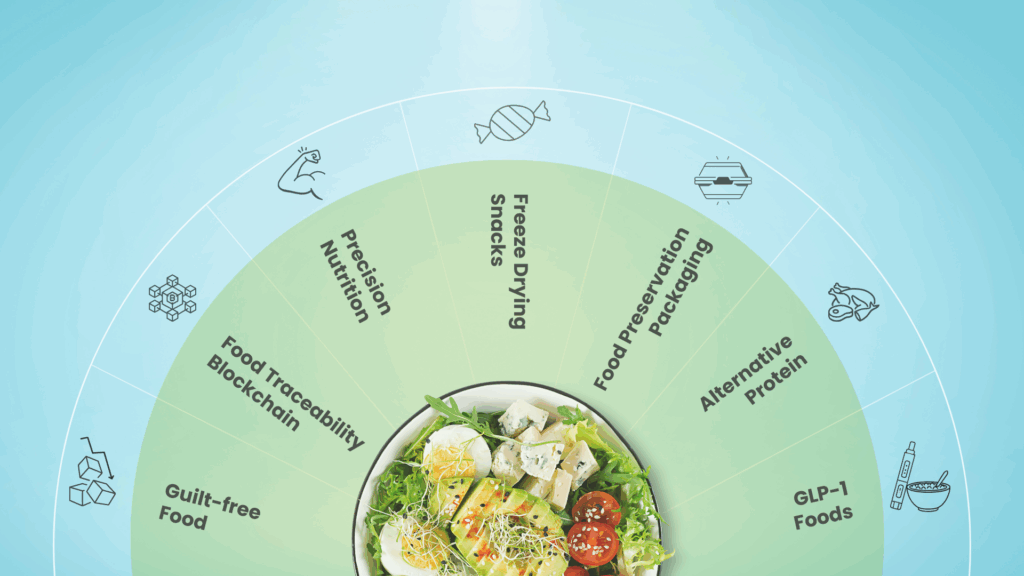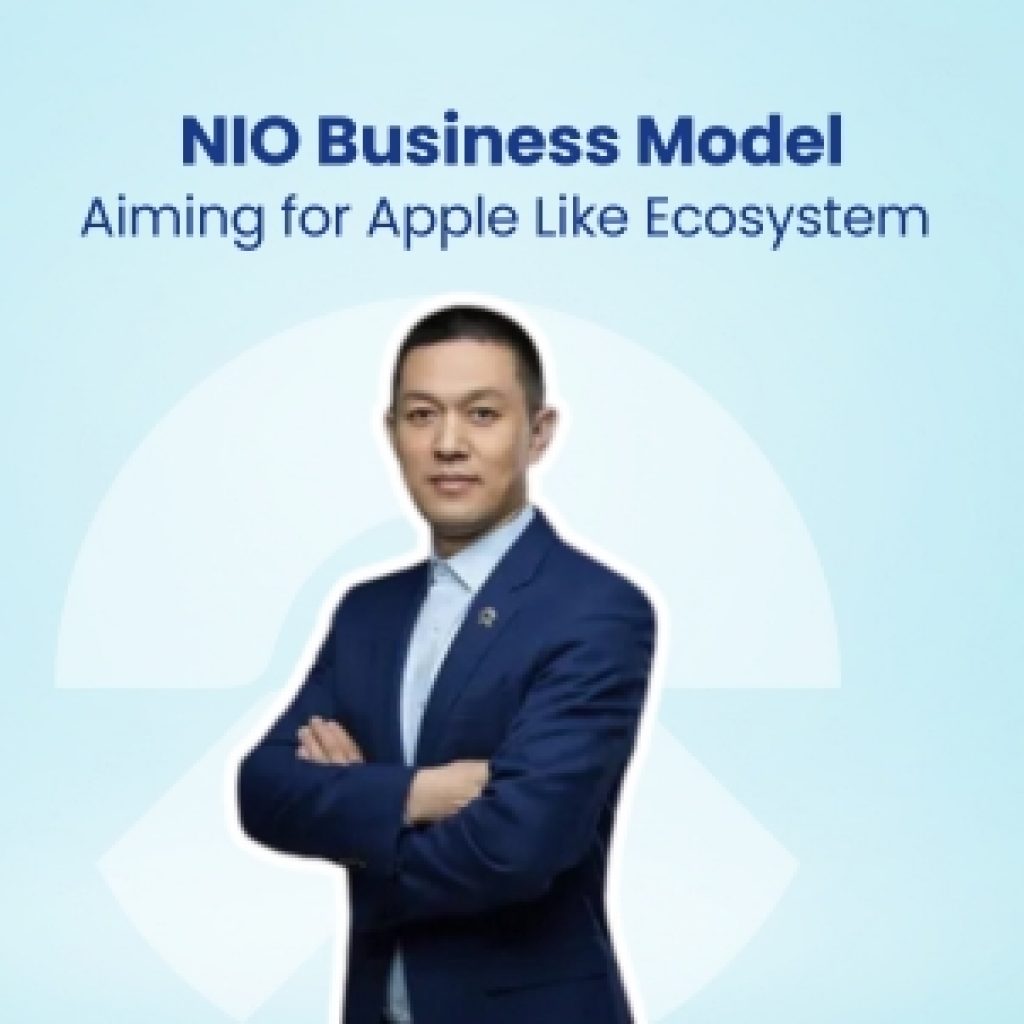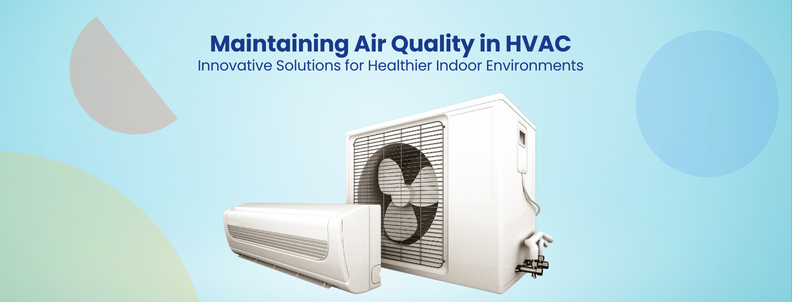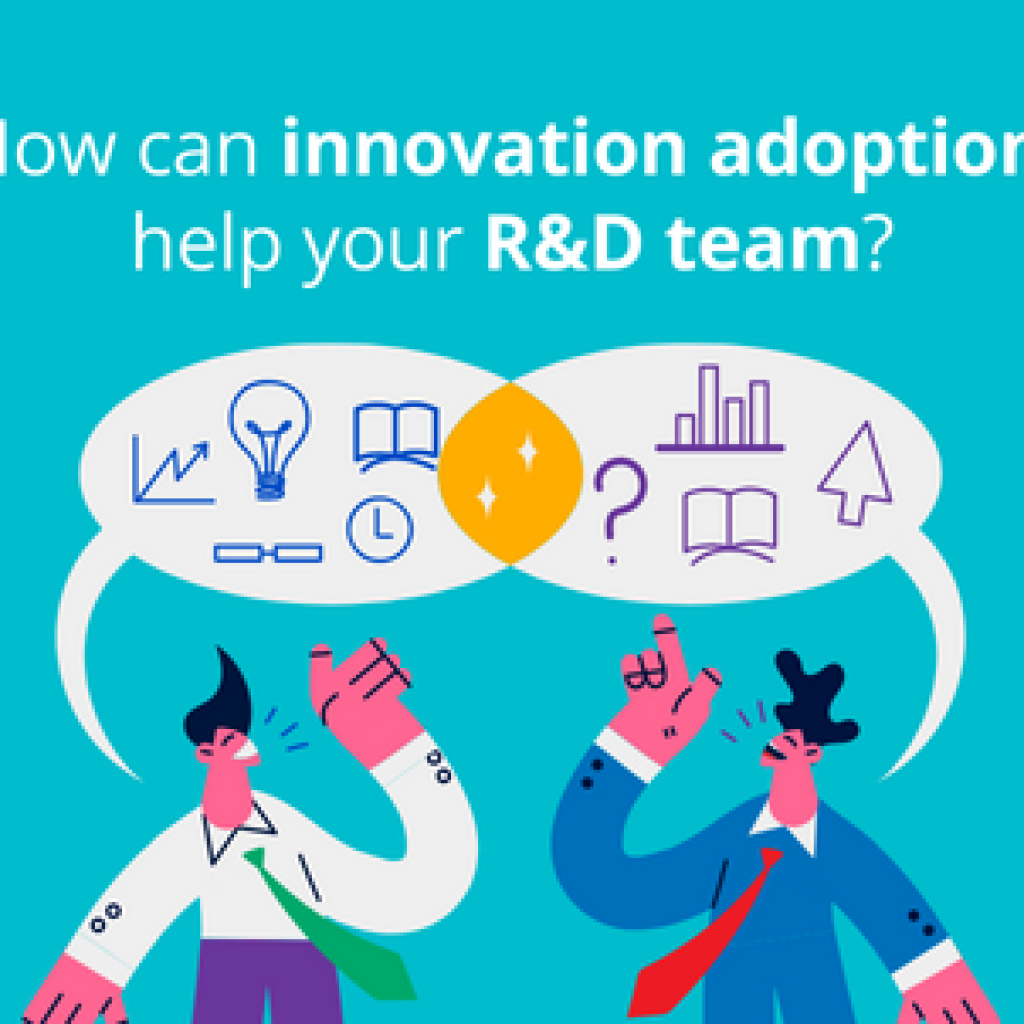The first business to successfully launch a privately manufactured spacecraft into orbit and bring it back to Earth safely was SpaceX in 2010. The company now wants to set a record for the first commercial spacecraft to dock with the International Space Station. Musk nevertheless has even greater ambitions, aiming to become the first businessperson to launch an astronaut into orbit.
With people like Elon Musk aspiring to make interplanetary travel a reality, space exploration is presently making a lot of buzzes. His goal of terraforming Mars for human habitation also falls under this category.
As a result, the space industry is now one of the most lucrative industries globally. In fact, the industry is expected to reach $558 billion by 2026, with a CAGR of 5.6%.
Further, the demand for small or nano-satellites and reusable launch vehicles is the reason why countries like China, the US, Russia, and Europe are heavily investing in this sector.
Even though the space industry is famed, there are relatively few notable companies in it. However, in recent years, the number of organizations in the space sector increased unexpectedly. Today, India alone has more than 120 startups researching space tech. A Forbes article lists more than 10,000 space-related organizations.
Source: Forbes
A number of space technology companies, including SpaceX and Blue Origin, were examined by our team of experts at GreyB for tech scouting. Upon closer inspection, we found that a handful of these companies are noteworthy because they are addressing important issues in the space industry.
After recognizing the significance of their contributions and evaluating them on numerous criteria, we came up with a list of the top 10 space technology startups:
1. Relativity Space
| Website | https://www.relativityspace.com/ |
| HQ | The United States |
| Total Funding Amount | $1.3 Billion |
| Top Investors | Y Combinator, Tiger Global Management, Social Capital, Fidelity Management and Research Company, Mark Cuban |
| Innovative Tech | Uses proprietary raw materials and 3D printing technology to automate rocket manufacture. |
Which Innovative Technologies are being used by Relativity Space?
Patented 3D Printing Technology – Rocket manufacturing at Relativity Space is handled using a sizable 3-D printer known as Stargate. Its 3D printing technologies aid in the digitization of the manufacturing process. The technology can create fully reusable rockets in just 60 days, compared to two years or more for conventional aerospace businesses, thanks to a faster manufacturing process that employs autonomous robotics and artificial intelligence. Stargate’s implementation enables ongoing production optimization, resulting in significantly compounded advantages in quality and time, cost reductions, and product designs that were previously unachievable. (Source)(Source)(Source)
“I think all the momentum is there. We’ve got to show what we’ve got. But major parts of the rocket have already flown a simulated mission on the ground, and [we’re] quite confident we’ve gotten over the hump where the 3D printed rocket is now inevitable — truly inevitable. 3D printing with AI and robotics [are] how things are going to be built on another planet.” – Tim Ellis, Cofounder & CEO, Relativity Space. (Source)
Relativity Space’s Third Generation 3D-Printer
Relativity’s Stargate 3D Printer Building A Rocket Fuel Tank
Factory of the Future – To encourage innovation in the field, Relativity Space created its own Factory of the Future. It is a platform for the aerospace industry made to automate the manufacture of rockets through the vertical integration of 3D printing, software, and intelligent robots. (Source)
“It’s home base for our efforts for some time to come, as it will allow us to fully produce the Terran 1 rocket. It’s the factory of the future. We have our engineering offices one door, literally like two steps, away from our engineering area. So the ability to go from your computer and analysis tools to go out and see the hardware means we have a super tight iteration loop, which is great.” – Zach Dunn, Vice President of Factory Development, Relativity Space. (Source)
Proprietary Raw Materials – To satisfy the requirements of mission-critical performance, Relativity Space created some unique high-strength alloys intended explicitly for 3D printing. It features an in-house material characterization lab, so they can easily iterate on developing new alloys. During and after the printing process to guarantee that they meet the most stringent quality and uniformity requirements. (Source)
What Acquisitions and Collaborations have Relativity Space made?
In 2020, Relativity Space and 6K formed a strategic collaboration to demonstrate genuine sustainability in additive manufacturing. In addition, the two businesses will investigate novel materials developed expressly for rocket production and space flight. The collaboration aims to build a tight sequence supply chain in which verified waste materials produced by Relativity are transformed into powder by 6K and reproduced by Relativity.
“Relativity is completely reimagining the aerospace supply chain, by creating an autonomous robotic factory that can additively manufacture a rocket in 60 days. This partnering with 6K will add another important element to our very unique approach: the ability to reuse materials.” – Tim Ellis, Relativity Space, Co-Founder and CEO. (Source)
In 2020, Relativity Space Inc. and Clean TeQ Holdings Limited partnered to manufacture scandium-aluminum alloys for 3D printing of rockets for commercial space launch services. The two firms have also reached an agreement under which the firm would provide scandium oxide from Clean TeQ’s Sunrise Project in Australia. (Source)
Relativity Space and Impulse Space joined together in 2022 to launch the first commercial cargo to Mars in 2024. To deliver the collaborator’s cargo to Mars, the company will provide a Terran R space rocket that was 3D printed. The payload includes a Mars Cruise Vehicle and a Mars Lander, which will be launched from Florida aboard a Terran rocket in compliance with a contract that will extend until 2029. Relativity claims that its 3D printing technology enables them to “construct” rockets in less than 60 days using 100x fewer parts. (Source)(Source)
Which Awards have been Received by Relativity Space?
- Relativity Space won the 2021 Emerging Technology Award at the IEEE Spectrum Awards. (Source)
- The Chamber by the Hancock County Port & Harbor Commission awarded Relativity Space the 2018 Industrial Award of Excellence. (Source)
How many Patents does Relativity Space have?
Relativity Space has filed 21 patent applications, of which 5 are granted. The startup has filed patents in the US, Canada, Europe, Japan, New Zealand, and Russia.
2. Blue Origin
| Website | https://www.polkawar.com/ |
| HQ | The United States |
| Total Funding Amount | $167.4 Million |
| Top Investors | NASA, United States Space Force |
| Innovative Tech | Uses vertical take-off and landing structures to reuse the first stage of launch vehicles. |
Which Innovative Technologies are being used by Blue Origin?
Vertical Take-Off, Vertical Landing (VTVL) Architecture – With just minor repairs, the vertical take-off and landing structure allow launch vehicles to reuse their first stage 25 times. As a result of the hardware not being thrown away, 25 times less waste is generated. Its vehicles have liquid fuel engines that can be throttled, allowing them to land precisely on the landing platform. Therefore, all of the cars can achieve high asset utilization, which lowers expenses and boosts client accessibility. (Source)
Launch of the New Shepard VTVL Rocket from Blue Origin’s Launch Site

What Acquisitions and Collaborations have Blue Origin made?
In 2019, Blue Origin was chosen to join in three agreements with NASA to enhance the technology that might be used for Artemis lunar missions. The company’s initial partnership was with Johnson Space Center and Goddard Space Flight Center on a tracking and navigation system for lunar landings at various places.
The second collaboration is with Johnson Space Center and Glenn Research Center on a fuel cell device that might offer the Blue Moon lander continuous power throughout the two-week lunar night.
Blue Origin’s third collaboration was with the Marshall Space Flight Center and the Langley Research Center to investigate and develop high-temperature materials for liquid rocket engine cylinders that might be utilized on lunar landers. Blue Origin’s three agreements are focused on the Blue Moon lander, which might be operational by 2024. (Source)
In 2021, Blue Origin announced a partnership with Lockheed Martin, Northrop Grumman, and Draper Laboratory. Additionally, The cooperation would not only produce spacecraft for the organization but would also design them for a predetermined fee for NASA. The Blue Moon lander has been under development by Blue Origin for a while as it was initially intended to carry heavy goods, not passengers, to the moon. (Source)
In 2022, Blue Origin announced the acquisition of Honeybee Robotics for an unknown amount. According to NASA, Honeybee Robotics was working on a device to evaluate viscous bubble behavior in lunar gravity conditions. This was the motivation behind the acquisition, as this technology is intended to be used on Blue Origin’s New Shepard suborbital rocket system. Honeybee’s skills and experience are complementary to Blue Origin’s aims of making space flying regular and opening up space resources to benefit Earth. (Source)
Which Awards have been Received by Blue Origin?
- The Commercial Spaceflight Federation awarded Blue Origin the 2022 Commercial Space Pioneer Award. (Source)
- Blue Origin won the Seattle Business Magazine’s 2017 Tech Impact Awards under the ‘Space’ category. (Source)
- Blue Origin’s New Shepard was awarded the 2016 Collier Trophy by National Aeronautic Association (NAA). (Source)
How many Patents does Blue Origin have?
Blue Origin has filed 84 patent applications, of which 24 patents are granted. The startup has filed the majority of patents in the US and a few in Europe, China, and Japan.
3. SpaceX
| Website | https://www.spacex.com/ |
| HQ | The United States |
| Total Funding Amount | $9.6 Billion |
| Top Investors | Threshold, Founders Fund, Google, Baillie Gifford, Bank of America, Mirae Asset Venture Investment, NASA |
| Innovative Tech | Manufactures reusable rockets to transport people and payloads. |
Which Innovative Technologies are being used by SpaceX?
Falcon 9 – Falcon 9 is a two-stage, reusable rocket designed and produced to transport people and payloads reliably and safely into Earth orbit and beyond. Due to the rocket’s ability to be reused, SpaceX can re-fly the components of the rocket that are the most expensive. This, in turn, reduces the cost of accessing space. (Source)
Starship – The Starship is a reusable and super-heavy-lift launch vehicle. It is equipped with an integrated payload section and has the potential to transport passengers as well as goods to planets, Earth orbit, and between locations on Earth. These test flights are about helping the company understand better and build a fully reusable transportation system that can carry humans and goods on long-term interplanetary flights and help people return to the Moon, Mars, and other places. Besides, it is intended to transport satellites across greater distances while simultaneously reducing the marginal cost of each launch. (Source)
Dragon – The Dragon spaceship can take up to seven people to and from Earth orbit and further. It is the only spacecraft in use right now that can bring back a lot of cargo to Earth. It is also the first private spacecraft to take people to the International Space Station. The Dragon spacecraft has 16 Draco thrusters deployed to regulate the spacecraft’s orientation during the mission. These thrusters are used for orbit adjustments, apogee/perigee maneuvers, and attitude control. (Source)
Crew Dragon Capsule
What Acquisitions and Collaborations have SpaceX made?
NASA and SpaceX collaborated on test flights and research in 2020. During re-entry operations over the Pacific, the business will work with Langley to observe and carry out thermal measurements on its Starship launch vehicle and spacecraft. (Source)
In 2021, SpaceX announced that it would soon collaborate with companies in the Indian telecom industry, including Reliance Jio, Vodafone Idea, BharatNet, and Raitel. In the most remote places, the collaboration will offer satellite communication services or internet from space. Starlink Satellite Communications Private Limited (SSCPL), a wholly owned subsidiary of SpaceX, has been incorporated in India, enabling them to start making license applications. (Source)
In 2021, Swarm Technologies, a satellite data start-up, was acquired by SpaceX for an unknown sum. In addition to any licenses pending approval by the commission, the acquisition gave them the authority over Swarm’s ground and space licenses. Furthermore, access to the knowledge and skills created by the Swarm team and its intellectual property also benefited SpaceX. (Source)(Source)
Which Awards have been Received by SpaceX?
- SpaceX won the 2017 Company of the Year award at the SpaceNews Awards for Excellence & Innovation. (Source)
- The Los Angeles Headquarters Association (LAHQ) awarded SpaceX the 2017 Spirit of Los Angeles Award. (Source)
- SpaceX won the 2016 World Technology Network Award under the ‘Space’ category. (Source)
How many Patents does SpaceX have?
SpaceX’s portfolio has 72 patents that belong to 26 patent families. Most SpaceX patents are focused on its Starlink Project, which aims to beam broadband internet connectivity from Space.
Read more about SpaceX Patents here.
4. LeoLabs
| Website | https://leolabs.space/ |
| HQ | The United States |
| Total Funding Amount | $82 Million |
| Top Investors | Insight Partners, Horizons Ventures, Airbus Ventures, Velvet Sea Ventures, WERU Investment |
| Innovative Tech | Utilizes radars to track space debris and satellites. |
Which Innovative Technologies are being used by Leolabs?
Proprietary Radars To Track Objects In Lower Earth Orbit – The radars of LeoLabs monitor space debris and satellites constantly. They do not react to the sun’s rays, clouds, rainfall, snowfall, or wind. Each radar can track hundreds of objects every hour and uses a patent-pending technology called phased array to change its focus from one target to the next within a millisecond. In 2021, the firm added two additional radars to its fleet, which enabled it to monitor more than 250,000 bits of garbage. (Source)(Source)(Source)
LeoLabs Costa Rica Space Radar
LeoLabs Kiwi Space Radar
What Acquisitions and Collaborations has Leolabs made?
In 2020, LeoLabs, an orbital object-tracking startup, collaborated with SpaceX to track SpaceX’s Starlink satellites at the time of initial deployment and orbital travel. LeoLabs has the edge over competing solutions concerning how quickly it can gather signals from many recently launched Starlink satellites, which SpaceX has been launching in groups of 60.
“LeoLabs is excited to work with SpaceX as they launch the world’s largest constellation of satellites to provide global broadband internet access. Our global radar network and software platform allow LeoLabs to acquire an entire batch of Starlink satellites faster than any other organization in the world and provides SpaceX with a level of certainty that was previously not available.” – Dan Ceperley, LeoLabs, CEO. (Source)(Source)
In 2022, LeoLabs announced its collaboration with OneWeb. Both firms engaged in a multi-year deal to provide OneWeb’s growing fleet of spacecraft with LeoLabs Collision Avoidance to enhance the operational safety of flight. This collaboration enhances responsible and sustainable space operations while reinforcing their objective to establish a safer and more sustainable operating environment in Low Earth Orbit (LEO). (Source)(Source)
LeoLabs Australia, a division of LeoLabs Inc., collaborated with Ampcontrol in 2021 as part of a grant from the Australian Government’s Modern Manufacturing Initiative – Collaboration (MMI-C). Together, the businesses had embarked on an ambitious $240 million project to develop cutting-edge space surveillance radars and establish Australia as the world’s sole supplier of LeoLabs’ cutting-edge radar modules. (Source)(Source)
Which Awards have been Received by Leolabs?
- Leolabs’ Collision Avoidance won the award for the Best Product at the Forbes Science Awards 2020. (Source)
- LeoLabs won the Aviation Week Network’s Annual Laureate Awards under the ‘Space Operations’ category. (Source)
How many Patents does Leolabs have?
Leolabs has filed 33 patent applications, of which only 5 are granted. The startup has filed patents in the US, Australia, Canada, Europe, South Korea, and Argentina.
5. Planet
| Website | https://www.planet.com/ |
| HQ | The United States |
| Total Funding Amount | $573.9 Million |
| Top Investors | DCVC, BlackRock, Prelude Ventures, IFC Venture Capital Company |
| Innovative Tech | Delivers the latest satellite data using satellite constellations and web-geo platform to clients. |
Which Innovative Technologies are being used by Planet?
Web-Geo Platform – Planet offers a web-geo platform that uses the most up-to-date satellite data and analytics to help users all over the globe make important and timely decisions. The platform processes and delivers a global, near-daily stream of satellite data into customers’ and partners’ workflows, allowing them to design applications that adapt to a changing environment swiftly. Organizations, governments, and research institutions use Planet’s data and platform to expand their operations, make them more efficient, reduce risk, and develop new approaches to solve major concerns. (Source)
Constellations – Planet has three satellite constellations: Doves, SkySats, and RapidEye (retired). Doves are far more compact than conventional satellites, as they are roughly the size of a shoebox and weigh around 5kgs. This makes them smaller by several orders of magnitude. The SkySats constellation consists of 21 individual satellites in total. SkySats can be directed to photograph any location on Earth at a resolution as high as 50cms and a sub-daily frequency. Additionally, they can record video footage and stereo pictures for a maximum of 90 seconds. The RapidEye satellite, roughly the size and weight of a compact refrigerator, gathered pictures in a line-scanner mode similar to that of the Doves satellites. (Source)
Planet Labs Constellations
What Acquisitions and Collaborations has Planet made?
Planet acquired VanderSat in 2021 for around $28 million, which is a significant provider of daily data and insights about Earth. The position of Planet in the agricultural industry is further enhanced by this acquisition. VanderSat brings to Planet top-tier people that have created genuinely unique and potent products that have been shown to produce quantifiable outcomes for clients. Planet will make use of VanderSat’s technologies and goods in its ongoing efforts to sell cutting-edge solutions that make the most of available commercial and open-source satellite data in order to offer clear and valuable information to businesses, non-profits, and governments throughout the world.
“We’re thrilled to be welcoming the VanderSat team to Planet. We expect VanderSat’s analytics and industry expertise will help Planet provide solutions ‘up the stack’ to bridge the gap from complex remote-sensing science to products that offer improved data to the ecosystem and our customers. And when one combines their new data with Planet’s, the value is far greater than the sum of its parts.” – Will Marshall, Planet, CEO and Co-Founder. (Source)(Source)
In 2021, the agreement between Planet and Inzpire, a well-known provider of defense classes, was announced. With the help of Inzpire’s cutting-edge training techniques and Planet’s ‘always-on’ satellite dataset, the alliance enables both businesses to efficiently serve their dedicated clients. (Source)
In 2021, Planet collaborated with Google Cloud to develop collaborative solutions that integrate Planet’s high-frequency Earth observation data with Google Cloud’s cloud architecture to facilitate improved data-driven decision-making. Planet will continue to host and analyze its own internal data using Google Cloud services. This partnership demonstrated Planet and Google Cloud’s shared dedication to assisting organizations and businesses in creating more dynamic futures.
“Planet customers want scalable compute and storage. Google Cloud customers want broader access to satellite data and analytics. This partnership is a win-win for both, as it helps customers transform their operations and compete in a digital-first world, powered by Planet’s unique data set.” – Kevin Weil, Planet, President of Product & Business. (Source)
Which Awards have been Received by Planet?
Planet Labs won the American Astronautical Society’s Space Entrepreneurship Award in 2014. (Source)
How many Patents does Planet have?
Planet has filed 84 patent applications, of which 30 are granted. The startup has filed patents in the US, Europe, and Canada.
P.S. Which of these startups do you believe will produce the most promising outcomes over the next few years now that we have covered the first half of the best-performing startups?
Let us know in the comments below!
Moving forward,
6. Astra
| Website | https://astra.com/ |
| HQ | The United States |
| Total Funding Amount | $300 Million |
| Top Investors | BlackRock |
| Innovative Tech | Offers affordable dedicated orbital launch services. |
Which Innovative Technologies are being used by Astra?
Low-Cost Orbital Launch Services – Astra has one of the most affordable ways to get into custom orbits and has one of the most affordable dedicated orbital launch services. It allows to schedule the delivery of payloads to both sun-synchronous orbits and low-inclination orbits online. In 2021, Astra successfully launched its first commercial into low Earth orbit. It developed Launch System 2.0 so that it could support a faster rate of launches. At a base bulk launch price of US $5 million, the launch vehicle will be able to send up to 600 kg into low Earth orbit. (Source)(Source)(Source)
“We have increased the design point of our new launch system to deliver up to 600-kilogram satellites to mid-inclination low Earth orbit over the course of the product lifecycle, which we believe will allow us to service over 75% of the small satellite market, including many of the new mega-constellations.” – Chris Kemp, Co-Founder, Chairman, and CEO, Astra. (Source)
Astra’s Spaceport Network
What Acquisitions and Collaborations has Astra made?
Astra and Holicity Inc. reached a comprehensive business combination agreement in 2021, making Astra a publicly traded corporation. The deal raised around $500 million in cash for Astra, which was used to accelerate expansion, increase its addressable market, and build its space services platform. (Source)(Source)
Astra Space, Inc. acquired Apollo Fusion in 2021 to capitalize on the two companies’ combined expertise in creating and producing large-scale products capable of reaching locations beyond low Earth orbit. Astra paid $30 million in stock and $20 million in cash for Apollo Fusion. The agreement contained $95 million in earn-out bonuses if Apollo Fusion met specified technical and revenue benchmarks. Astra used Apollo Fusion’s Apollo Constellation Engine electric propulsion systems in satellite vehicles it is developing to provide clients with a complete solution.
“What this is about is adding a really core piece of technology to Astra’s platform. It’ll unlock a whole new set of customer opportunities for us. The next puzzle piece is the vertically integrated spacecraft. So, as we started to look at that, what are the core technologies that drive that? This engine is one of those key cornerstones of that space platform we’re building.” – Chris Kemp, Founder, Chairman, and CEO, Astra. (Source)
In 2022, a multi-launch deal was announced by Astra Space, Inc. and Spaceflight, Inc. On March 14, 2022, the first launch under this agreement was scheduled. This partnership offers Spaceflight launch possibilities using Astra’s launch services until 2025.
Which Awards have been Received by Astra?
The WP Awards 2021 recognized Astra as the Best WordPress Theme of 2021. (Source)
How many Patents does Astra have?
Astra has filed 1 patent application which is now granted in the US.
7. Hydrosat
| Website | https://www.hydrosat.com/ |
| HQ | The United States |
| Total Funding Amount | $15.6 Million |
| Top Investors | Cultivation Capital, Luxembourg-City Incubator, OTB Ventures, Techstars Starburst Space Accelerator |
| Innovative Tech | Collects and analyses information about Earth’s surface temperature using thermal infrared imaging. |
Which Innovative Technologies are being used by Hydrosat?
Geospatial Intelligence for Food Security, Public, Safety, and the Environment – It is a data analytics firm that provides its services to commercial and government clients by collecting and analyzing information on the temperature at the surface of the Earth through the use of thermal infrared imaging. The firm has relied solely on data already collected by third-party satellites. However, now that it has access to additional funds, it intends to deploy its satellite constellation to collect data that is both more accurate and more recent. Customers in the global agricultural and finance sectors benefit from Hydrosat’s superior analytics by receiving accurate crop yield predictions and better irrigation tools. (Source)(Source)(Source)
“Thermal infrared data analysis is at the frontlines of climate change. When we think about how climate change is impacting communities – our food resources, for instance – it’s through big events like droughts and wildfires that are having an immediate impact. We’re looking to provide data to better help prepare for those events.” – Pieter Fossel, Co-Founder and CEO, Hydrosat. (Source)
What Acquisitions and Collaborations has Hydrosat made?
In 2020, Hydrosat and Loft Orbital struck a deal to launch Hydrosat’s first satellite mission in early 2022. In accordance with the contract, Loft Orbital’s YAM-6 spacecraft will execute Hydrosat’s first multi-spectral infrared mission atop a SpaceX Falcon 9 rocket. First commercially available space-based thermal images will be made available by the VanZyl-1 mission to monitor agricultural practices, analyze the risk of wildfires, and monitor water stress.
“We are building the world’s first commercial infrared satellite constellation capable of measuring temperature. Until now, thermal infrared has been the sole domain of government programs. We are demonstrating that a highly accurate capability can be delivered commercially at low cost.” – Pieter Fossel, CEO, Hydrosat. (Source)
In 2022, Hydrosat and RIT Imaging Science collaborated to advance their mission of providing best-in-class thermal and multi-spectral infrared data to address some of the planet’s most urgent issues. (Source)
In 2022, Hydrosat received $10 million in seed funding to expedite the introduction of its ground temperature analytics platform. Hydrosat also disclosed that it is collaborating with ABB to construct a thermal infrared device that will be launched into orbit. ABB has manufactured imagers and sensors for NASA, the Canadian Space Agency, the Japanese Aerospace Exploration Agency, and other private firms. (Source)
8. Skyroot Aerospace
| Website | https://skyroot.in/ |
| HQ | India |
| Total Funding Amount | $17 Million |
| Top Investors | Sherpalo Ventures, Wami Capital, Anil Chalamalasetty, Mahesh Kolli |
| Innovative Tech | Makes cryo engines by using 3D-printing and superalloy. |
Which Innovative Technologies are being used by Skyroot Aerospace?
3D-Printed Cryo Engine – Dhawan-1 – The entire engine was made in India using 3D printing. The company 3D-printed the engine utilizing a superalloy, which cut the time it took to make the engine by 95%. The Dhawan-1 rocket engine uses cryogenic propellants such as liquid oxygen (LoX) and liquid natural gas (LNG). The company imagines a future where space travel is as widespread, reliable, and economical as air travel. (Source)(Source)(Source)
3D Printed Dhawan-1 rocket Engine (Source)
What Acquisitions and Collaborations has Skyroot Aerospace made?
In 2021, a collaboration with Bellatrix Aerospace was announced by Hyderabad-based company Skyroot Aerospace. This collaboration will enable Skyroot to employ the orbital transfer vehicle (OTV) technology of the Bengaluru-based business for its own Vikram series of rockets. The transfer vehicle that Bellatrix is developing would be integrated with the Vikram rocket’s upper stage, allowing for a more complex satellite delivery system. (Source)
In 2021, Skyroot Aerospace partnered with the Indian Space Research Organization (ISRO). In order to test and validate its small rocket before its flight next year, Skyroot Aerospace will be able to leverage its knowledge and access resources thanks to the agreement. R Umamaheswaran, scientific secretary at ISRO and chairman of the Interim IN-SPACe Committee, and Pawan Chandana, CEO of Skyroot Aerospace, had signed the contract. Agnikul Cosmos, Bellatrix Aerospace, Skyroot, and other rocket firms have been considering expanding the global chance to produce rockets and launch miniature satellites from Indian territory. (Source)
In 2022, Navars Edutech, a Hyderabad-based space business, revealed that it plans to launch 100 student-built satellite constellations over the course of five years while collaborating with Skyroot Aerospace as a launch partner. Through this collaboration, Navars Edutech will be the first space education firm in India, allowing K–12 students to build and launch satellites into orbit using a Skyroot Aerospace-developed, homegrown private launch vehicle. The CEO of Skyroot Aerospace, Pawan Chandana, claimed that this collaboration would bring space operations much closer to schools. (Source)
Which Awards have been Received by Skyroot Aerospace?
- Skyroot Aerospace won the National Award for Technology Startups 2022 from the Department of Science& Technology for the indigenous development of propulsion technologies for Space vehicles. (Source)
- Skyroot Aerospace was awarded National Startup Awards, 2020. (Source)
- Skyroot Aerospace was awarded the Jury Choice Award under Innovation Category in Aegis Graham Bell Awards 2021. (Source)
9. Axiom Space
| Website | https://www.axiomspace.com/ |
| HQ | The United States |
| Total Funding Amount | $150 Million |
| Top Investors | C5 Capital, IBX |
| Innovative Tech | Plans to operate a commercial space station. |
Which Innovative Technologies are being used by Axiom Space?
Commercial Space Station – The Axiom Station is a commercial lab and residential space in low Earth orbit. It will be used for microgravity experiments, testing vital materials in a space environment, and housing both private and professional astronauts. The construction of the first module has commenced and will prepare for launch in the latter half of 2024. (Source)(Source)
“The Axiom Space engineering team has rapidly expanded to meet the growing needs of developing the world’s first commercial space station. We are lucky to have the Axiom engineering team move into an iconic building in Clear Lake, filled with many fond memories for the local community, especially for many in the NASA/aerospace community.” – Matt Ondler, Chief Technology Officer, Axiom Space. (Source)
Axiom Commercial Space Station
Ax-1 – In 2022, the Ax-1 mission was the first of multiple Axiom missions planned to be sent to the ISS. It was also a significant step toward the development of the Axiom Station. The four-person crew spent 17 days aboard the ISS, performing over 25 scientific experiments and technology demonstrations and carrying out over 30 outreach activities. The crew bought back scientific research and supplies worth more than 200 pounds to Earth. (Source)(Source)
“They are not going have their noses against the window looking outside. Axiom Space is about a lot more than taking private astronauts to space. We are building our own space station that will be ready to launch in 2024.” – Kam Ghaffarian, Executive Chairman, Axiom Space. (Source)
What Acquisitions and Collaborations has Axiom Space made?
Axiom Space and Aotearoa New Zealand signed a memorandum of understanding (MOU) in 2022 to develop cutting-edge scientific and technological research. Through this relationship, Axiom Space and research teams stationed in New Zealand from the University of Canterbury, led by Dr. Sarah Kessans, and the University of Auckland, led by Dr. Brian Russell, will be able to work together more frequently. The partnership will give Aotearoa New Zealand access to perform scientific research in micro-gravity, allowing the nation to capitalize on its strengths in production and biotechnology and advance its space industry. (Source)
In 2022, NASA has chosen Axiom Space and Collins Aerospace to advance spacewalking capabilities in low-Earth orbit and on the Moon2. This will be done by purchasing services that give astronauts access to the most advanced spacesuit and spacewalk systems to work outside the International Space Station. (Source)
In order to advance their current partnership, Axiom Space and the Italian government have signed a memorandum of understanding (MOU) in 2022. This could contribute to the building space infrastructure connected to the upcoming Axiom Station in 2022. These agreements between Axiom and Italy highlight the promise and practicality of business-to-government collaborations in growing and expanding the commercial space ecosystem across numerous industries.
According to Michael Suffredini, President and CEO of Axiom Space, “As one of the first European countries invested in the International Space Station, this agreement with the Italian government will bring an experienced partner to Axiom Station, helping to open a new paradigm as we build this next generation microgravity platform in low Earth orbit.” (Source)
10. Firefly Aerospace
| Website | https://firefly.com/ |
| HQ | The United States |
| Total Funding Amount | $271.6 Million |
| Top Investors | AE Industrial Partners, DADA Holdings |
| Innovative Tech | Provides economical access to space for small payloads by manufacturing and operating launch and spacecraft vehicles. |
Which Innovative Technologies are being used by Firefly Aerospace?
Alpha – Alpha is a small satellite launch vehicle weighing 1,000 kg and is an operationally capable launch option within the small launch vehicle class. It has pump-fed, regeneratively-cooled engines that run on conventional LOx/RP, and its avionics systems, including the flight computer and communication system, utilize commercial-off-the-shelf (COTS) components with a proven flying record. (Source)(Source)
Beta – Beta is a two-stage launch vehicle with a design based on Firefly Alpha technology. It can deliver 13,000 kg to a 200 km (125 mile) Low Earth Orbit and achieve Geosynchronous Transfer Orbits. Furthermore, this vehicle includes technology such as all carbon composite tanks, historical LOx/RP-1 liquid-fueled engines, and other aspects of the Alpha layout. Firefly Beta has the lowest cost per kg to orbit than all launch vehicles in the 13,000 kg and underclass. (Source)
Space Utility Vehicle (SUV) – The Firefly Space Utility Vehicle (SUV) is the Alpha and Beta launch vehicles’ solar-electric third stage. The vehicle delivers in-space propulsion and can act as a payload bus for up to five-year missions. It can also transport multiple payloads from low-Earth orbit to the Moon. Additionally, some of its applications include deploying complete constellations or numerous payloads into unique orbits, sustaining extreme low altitude flight as low as 250 km, tuning orbits for launch vehicles using solid rocket motors, and more. (Source)(Source)
The Firefly Space Utility Vehicle (SUV)
What Acquisitions and Collaborations has Firefly Aerospace made?
In 2019, Firefly Aerospace, Inc. and Aerojet Rocketdyne announced a collaborative arrangement that integrated both businesses’ strengths to create versatile, sustainable, and highly competitive space access solutions. Firefly’s novel launch vehicle and in-space services combined Aerojet Rocketdyne’s expertise in propulsion research, additive manufacturing, and mission assurance for commercial, national security, and exploration missions.
According to Tom Markusic, CEO of Firefly Aerospace, “We’re excited to work with Aerojet Rocketdyne under this new collaborative agreement because of their extensive experience and the unique mission solutions they offer. Combined with our already mature Alpha design, our cooperation with Aerojet Rocketdyne is a significant differentiator in the small to medium launch vehicle market and will enable rapid performance increases of the Alpha vehicle.” (Source)
A Launch Services Agreement was signed by Firefly Aerospace, Inc. and Exolaunch GmbH in 2021. Early in 2022, this cooperation intended to deploy and integrate multi-satellite clusters using Firefly’s Alpha launch vehicle. Through cooperative alliances, such as this strategic partnership with Exolaunch, Firefly hoped to quickly boost the number of Alpha flights. Also, Exolaunch’s expertise in payload integration and its flight-tested launch hardware will be used by Firefly. (Source)
A Launch Services Agreement (LSA) was signed by Firefly Aerospace, Inc. in 2020 with Spaceflight Inc., a significant launch services and mission management organization. The bulk of the payload tonnage was obtained, and the contract states that Spaceflight would launch a Firefly Alpha rocket from Vandenberg Air Force Base in 2021. The LSA claimed that Spaceflight will help future Firefly Alpha missions carry more payload.
According to Dr. Tom Markusic, CEO of Firefly, ”Alpha launches in 2021 will play a key role in establishing our manifest and production capability, and having Spaceflight’s deep payload integration expertise in our corner is an important part of our overall launch strategy.” (Source)
How many Patents does Firefly Aerospace have?
Firefly Aerospace has filed 4 patent applications, and all 4 are granted now in the US.
Conclusion
Even though, visiting Mars seems like a distant fantasy, Elon Musk and SpaceX are making every effort to make it a reality. In addition, governments are making significant investments in space technology. The US government, followed by China and Russia, is by far the biggest spender.
Source: Forbes
The space industry still has a lot of work to do. But these major investments—some of which were even made by the government—indicate that in the years to come, the industry will see incredible growth and competition. Although companies like SpaceX currently have a big advantage over their rivals, however, there are still other markets where competition may get quite heated.
Consequently, there are still a lot of prospective chances in the space business.
Want to take advantage of these chances to grow your market?
Author: Vipin Singh, Marketing

